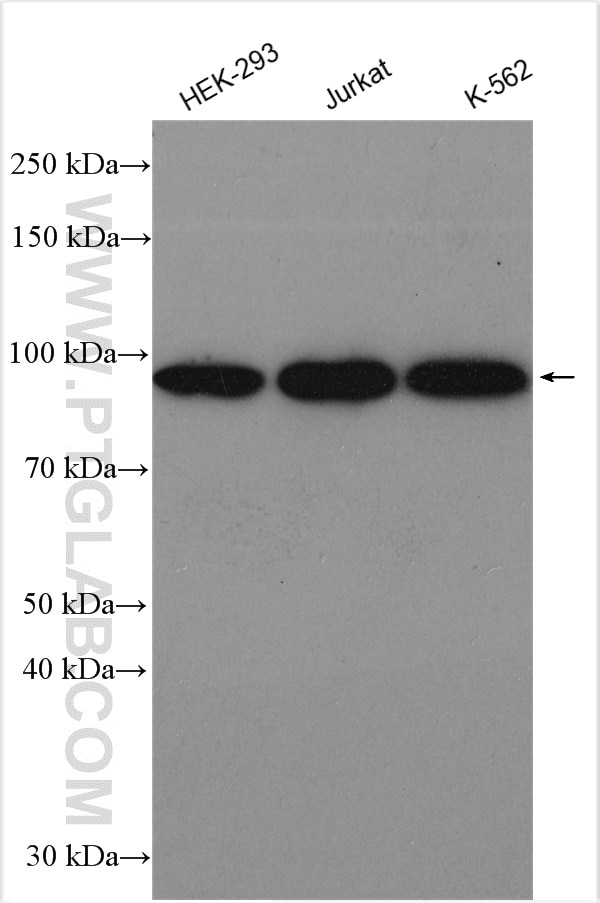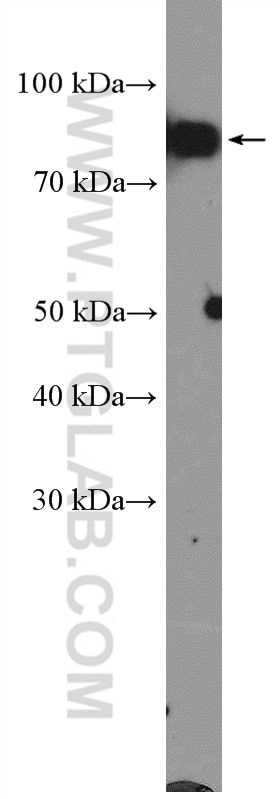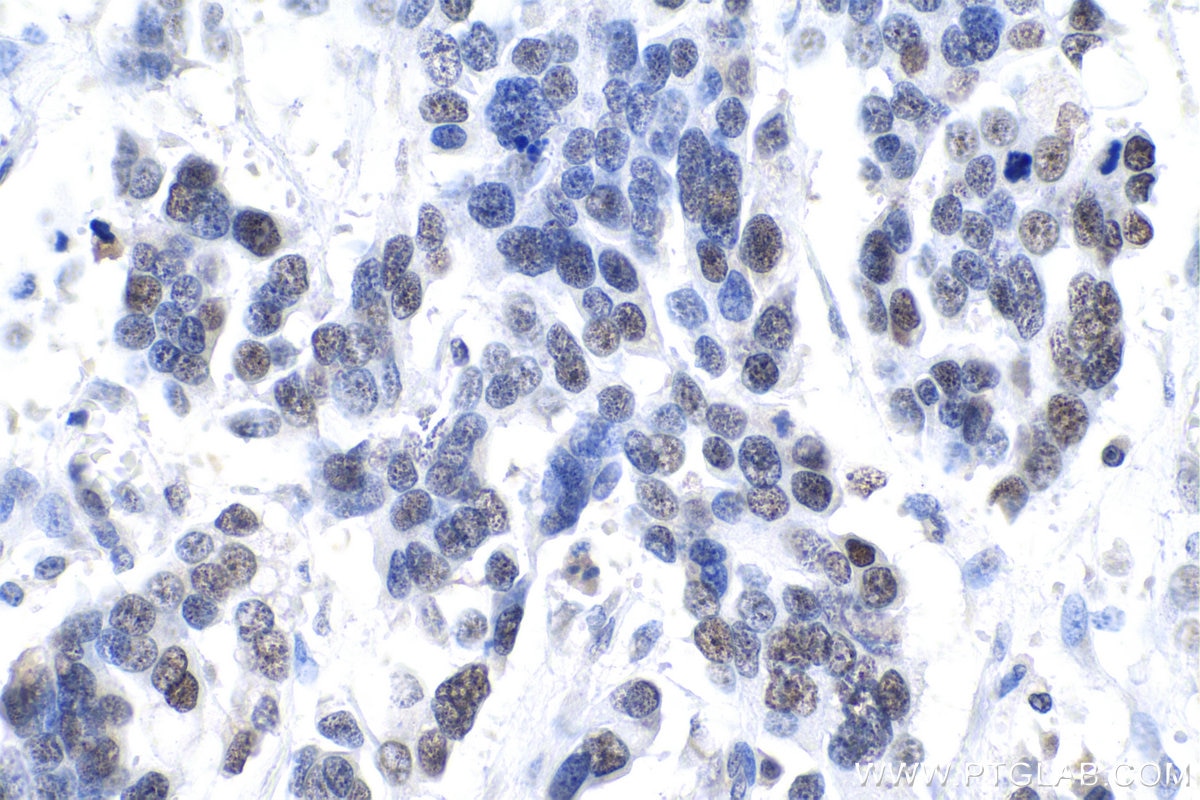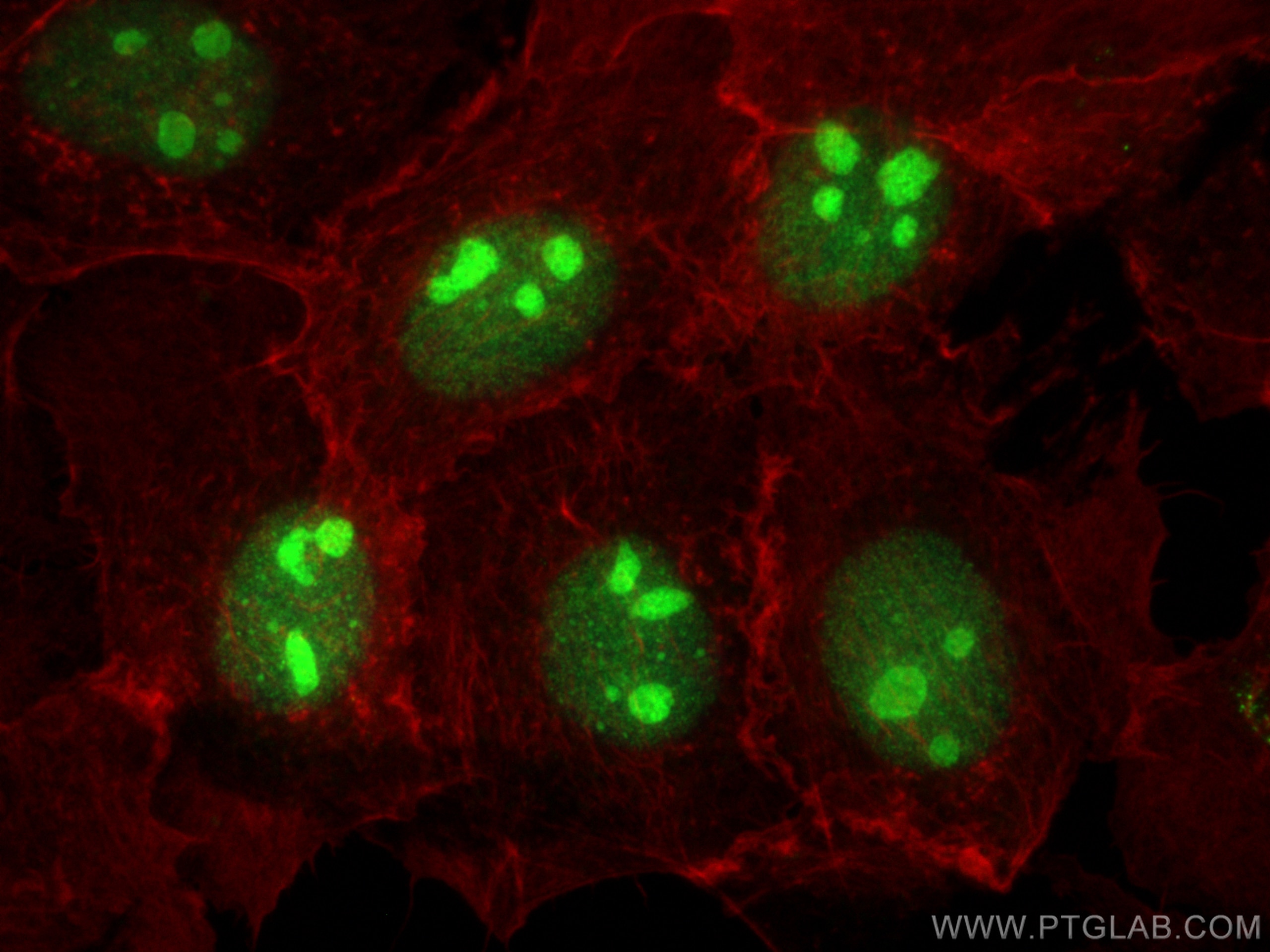- Featured Product
- KD/KO Validated
XRCC1 Polyklonaler Antikörper
XRCC1 Polyklonal Antikörper für WB, IHC, IF/ICC, ELISA
Wirt / Isotyp
Kaninchen / IgG
Getestete Reaktivität
human
Anwendung
WB, IHC, IF/ICC, ELISA
Konjugation
Unkonjugiert
Kat-Nr. : 21468-1-AP
Synonyme
Geprüfte Anwendungen
| Erfolgreiche Detektion in WB | HEK-293-Zellen, Jurkat-Zellen, K-562-Zellen |
| Erfolgreiche Detektion in IHC | humanes Kolonkarzinomgewebe Hinweis: Antigendemaskierung mit TE-Puffer pH 9,0 empfohlen. (*) Wahlweise kann die Antigendemaskierung auch mit Citratpuffer pH 6,0 erfolgen. |
| Erfolgreiche Detektion in IF/ICC | A431-Zellen |
Empfohlene Verdünnung
| Anwendung | Verdünnung |
|---|---|
| Western Blot (WB) | WB : 1:2000-1:12000 |
| Immunhistochemie (IHC) | IHC : 1:500-1:2000 |
| Immunfluoreszenz (IF)/ICC | IF/ICC : 1:200-1:800 |
| It is recommended that this reagent should be titrated in each testing system to obtain optimal results. | |
| Sample-dependent, check data in validation data gallery | |
Veröffentlichte Anwendungen
| KD/KO | See 2 publications below |
| WB | See 11 publications below |
| IHC | See 1 publications below |
Produktinformation
21468-1-AP bindet in WB, IHC, IF/ICC, ELISA XRCC1 und zeigt Reaktivität mit human
| Getestete Reaktivität | human |
| In Publikationen genannte Reaktivität | human |
| Wirt / Isotyp | Kaninchen / IgG |
| Klonalität | Polyklonal |
| Typ | Antikörper |
| Immunogen | XRCC1 fusion protein Ag15172 |
| Vollständiger Name | X-ray repair complementing defective repair in Chinese hamster cells 1 |
| Berechnetes Molekulargewicht | 633 aa, 70 kDa |
| Beobachtetes Molekulargewicht | 80-90 kDa |
| GenBank-Zugangsnummer | BC023593 |
| Gene symbol | XRCC1 |
| Gene ID (NCBI) | 7515 |
| Konjugation | Unkonjugiert |
| Form | Liquid |
| Reinigungsmethode | Antigen-Affinitätsreinigung |
| Lagerungspuffer | PBS with 0.02% sodium azide and 50% glycerol |
| Lagerungsbedingungen | Bei -20°C lagern. Nach dem Versand ein Jahr lang stabil Aliquotieren ist bei -20oC Lagerung nicht notwendig. 20ul Größen enthalten 0,1% BSA. |
Hintergrundinformationen
XRCC1 (X-ray Repair Cross Complementing group 1) is a molecular scaffold protein that interacts with multiple enzymatic components of DNA single-strand break repair (SSBR) including DNA kinase, DNA phosphatase, DNA polymerase, DNA deadenylase, and DNA ligase activities that collectively are capable of accelerating the repair of a broad range of DNA single-strand breaks (SSBs) (PMID: 18515191). XRCC1 is 633 amino acids in length which is comprised of an N-terminal domain (NTD) of ˜160 amino acids that interacts with Pol β, a central BRCT domain of ˜90 amino acids that interacts with PARP1 (PMID: 9584196). This antibody is not suitable for murine samples.
Protokolle
| PRODUKTSPEZIFISCHE PROTOKOLLE | |
|---|---|
| WB protocol for XRCC1 antibody 21468-1-AP | Protokoll herunterladen |
| IHC protocol for XRCC1 antibody 21468-1-AP | Protokoll herunterladenl |
| IF protocol for XRCC1 antibody 21468-1-AP | Protokoll herunterladen |
| STANDARD-PROTOKOLLE | |
|---|---|
| Klicken Sie hier, um unsere Standardprotokolle anzuzeigen |
Publikationen
| Species | Application | Title |
|---|---|---|
Nucleic Acids Res KDM6B promotes PARthanatos via suppression of O6-methylguanine DNA methyltransferase repair and sustained checkpoint response. | ||
J Cell Mol Med Berberine attenuates XRCC1-mediated base excision repair and sensitizes breast cancer cells to the chemotherapeutic drugs. | ||
Int J Environ Res Public Health Effects of DNA Damage and Oxidative Stress in Human Bronchial Epithelial Cells Exposed to PM2.5 from Beijing, China, in Winter. | ||
Toxicol Appl Pharmacol Polychlorinated biphenyl quinone induces oxidative DNA damage and repair responses: The activations of NHEJ, BER and NER via ATM-p53 signaling axis. | ||
Front Mol Biosci XRCC1 Is a Promising Predictive Biomarker and Facilitates Chemo-Resistance in Gallbladder Cancer.
|





